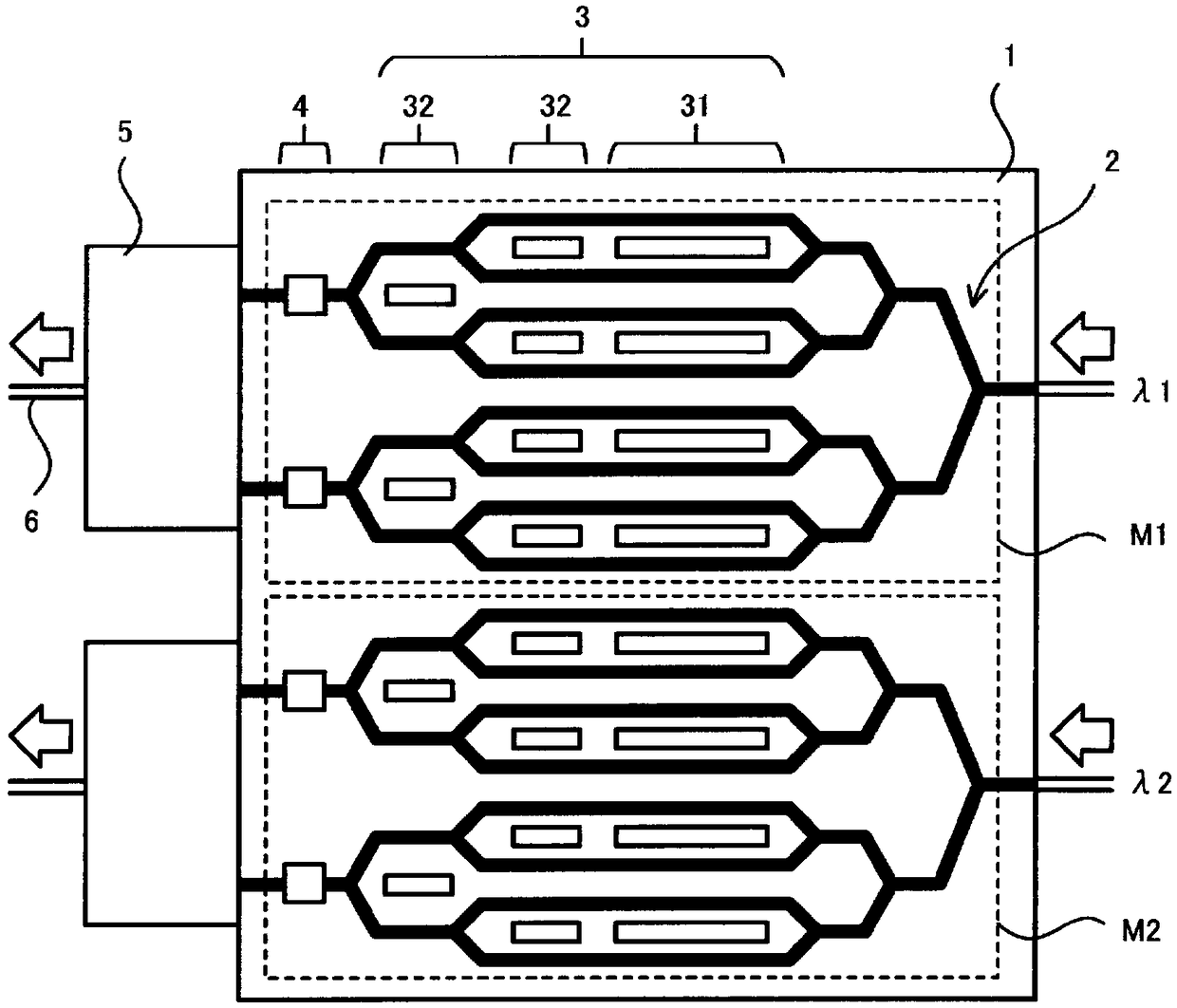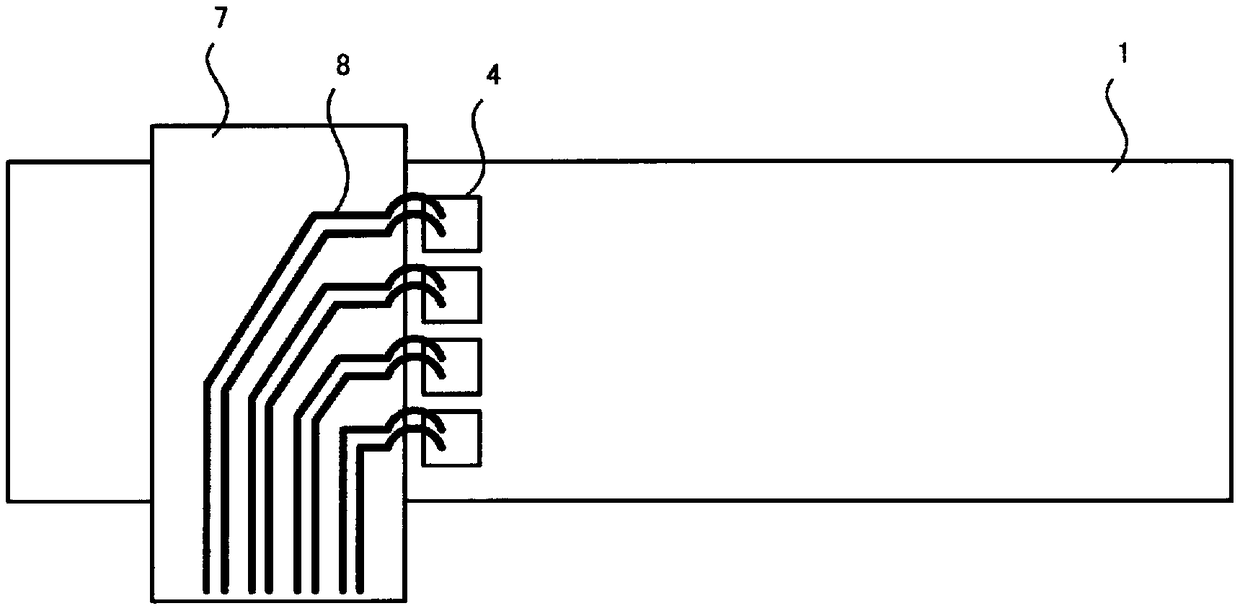Optical modulator
A technology of light modulator and modulation part, applied in the directions of light guide, optics, instruments, etc., can solve the problem of low degree of freedom of wiring, and achieve the effect of simplifying the wiring structure
- Summary
- Abstract
- Description
- Claims
- Application Information
AI Technical Summary
Problems solved by technology
Method used
Image
Examples
Embodiment 1
[0042] figure 2 It is a plan view showing the optical modulator according to the first embodiment of the present invention.
[0043] The optical modulator of this example includes a light receiving element 4 on the upper portion of the substrate 1 for each of the independent optical waveguide modulation sections. exist figure 2Among them, four light receiving elements 4 are provided on the substrate 1 . The wiring board 7 is separately arranged so as to be superimposed on the substrate 1 . The four light receiving elements 4 on the substrate 1 are arranged along one side of the wiring substrate 7 . On the upper surface of the wiring board 7 , a plurality of wirings 8 are arranged so as to extend to the vicinity of the side along which the light receiving elements 4 are arranged. The side end of each harness 8 is electrically connected to the light receiving element 4 corresponding to its arrangement position via a wire or the like. Each harness 8 extends toward the othe...
Embodiment 2
[0051] Figure 5 It is a plan view showing an optical modulator according to a second embodiment of the present invention.
[0052] In the light modulator of this example, the four light receiving elements 4 on the substrate 1 are arranged along opposite sides of the wiring substrate 7 . For example, the two light receiving elements 4 on the first optical waveguide modulator side are arranged along one of the two sides, and the two light receiving elements 4 on the second optical waveguide modulator side are arranged along the other side. On the upper surface of the wiring board 7 , a plurality of wirings 8 are arranged so as to extend to the vicinity of both sides along the arrangement of the light receiving elements 4 .
[0053] Also in such a configuration, the same effect as that of the light modulator of the above-mentioned embodiment can be obtained. In addition, since the light-receiving element of the first optical waveguide modulator and the light-receiving element ...
Embodiment 3
[0055] Figure 6 It is a plan view showing an optical modulator according to a third embodiment of the present invention.
[0056] The independent optical waveguide modulator of the optical modulator of this example is composed of a plurality of waveguide substrates 1 . That is, the first optical waveguide modulation section is constituted by the substrate 1a, and the second optical waveguide modulation section is constituted by the substrate 1b. In addition, two light receiving elements 4 are provided on the substrate 1a, and two light receiving elements 4 are provided on the substrate 1b. The substrates 1a, 1b are arranged side by side with each other on the same plane, and the wiring substrate 7 is arranged separately so as to overlap the substrates 1a, 1b. exist Figure 6 In the above, the four light receiving elements 4 on the substrates 1a and 1b are arranged along one side of the wiring board 7, but they may be arranged along opposite sides as in the second embodimen...
PUM
 Login to View More
Login to View More Abstract
Description
Claims
Application Information
 Login to View More
Login to View More - Generate Ideas
- Intellectual Property
- Life Sciences
- Materials
- Tech Scout
- Unparalleled Data Quality
- Higher Quality Content
- 60% Fewer Hallucinations
Browse by: Latest US Patents, China's latest patents, Technical Efficacy Thesaurus, Application Domain, Technology Topic, Popular Technical Reports.
© 2025 PatSnap. All rights reserved.Legal|Privacy policy|Modern Slavery Act Transparency Statement|Sitemap|About US| Contact US: help@patsnap.com



